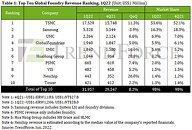
Intel Arc A770 Launched at USD $329, Available from October 12
Intel today announced the pricing for the Arc A770 Limited Edition desktop graphics card, and it is set at USD $329, offering a class of performance comparable to NVIDIA and AMD graphics cards around the $400-range. The A770 is a full-feature DirectX 12 Ultimate-capable graphics cards. The Arc A770 Limited Edition maxes out the 6 nm ACM-G10 silicon, features 32 Xe Cores, 512 XMX matrix processors, and 512 EUs, which work out to 4,096 unified shaders. The card comes with 8 GB or 16 GB of 17.5 Gbps GDDR6 memory across a 256-bit wide memory bus. $329 could be the starting price of the A770 for its 8 GB model. Available from October 12.




























































